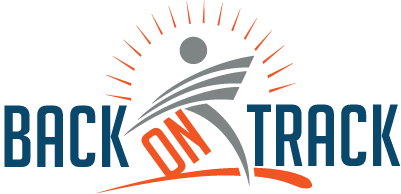The Hidden Sixth Dysfunction of Teams (And How to Fix It Without Getting Stuffy)
- Motty Chen

- May 25
- 3 min read

You’ve probably heard of Patrick Lencioni’s Five Dysfunctions of a Team—the classic guide to why teams fail. Trust issues, avoiding conflict, lack of commitment… yada yada. These are the usual suspects. But here’s the thing: even teams that nail those five can still fall apart. Why? Because there’s a sneaky sixth dysfunction lurking in the shadows: Stagnation Through Comfort.
Let me explain.
Imagine your team finally gets its act together. Trust is high, debates are lively, everyone’s aligned on goals, and people actually hold each other accountable. Success! But then… nothing changes. The team becomes too comfortable. They stick to what works, avoid rocking the boat, and stop pushing for new ideas. They’re like a cozy group of otters floating downstream: happy, but unaware they’re heading toward a waterfall. That’s stagnation. It’s what happens when “good enough” becomes the enemy of “let’s try something better.”
Why Stagnation Through Comfort Matters
Lencioni’s model is genius, but it doesn’t account for teams that plateau after fixing the basics. Stagnation Through Comfort creeps in when:
Past success breeds complacency (“Why fix what isn’t broken?”).
Risk-taking feels unnecessary (“We’re doing fine!”).
Innovation gets sidelined (“Let’s just focus on hitting our targets”).
Research shows this is a silent killer. Companies that rest on their laurels lose market share, miss trends, and get blindsided by hungrier competitors (just ask Blockbuster).
How to Fix All Six Dysfunctions (Yes, Including the New One)
Enter programs like True North Leadership - a coaching framework that tackles Lencioni’s original five dysfunctions and stomps out stagnation. Here’s how it works, without the corporate jargon:
Build Trust… By Being Messy
True North starts with vulnerability exchanges, structured chats where leaders admit mistakes, fears, and gaps. This isn’t kumbaya stuff; it’s about normalizing imperfection. Teams that embrace vulnerability build deeper trust faster.
Turn Conflict Into Fuel
Instead of dodging arguments, True North uses conflict transformation workshops. These teach teams to debate ideas passionately without taking things personally. It’s like MMA for business strategies - no blood, just better decisions.
Commit to Something Bigger
Teams often struggle with commitment because goals feel imposed. True North forces teams to fuse their individual purposes into a collective mission. When everyone sees how their role fits into the bigger picture, buy-in happens naturally.
Hold Each Other Accountable… Kindly
Forget top-down micromanagement. True North uses dynamic leadership, where team members lead projects based on their strengths and career development passion. The rest of the team is there to support and guide instead of criticizing and judging. This creates peer-to-peer accountability—no one wants to let their buddy down.
Focus on Results (Not Egos)
True North’s strategic anti-goals help teams define what failure looks like. By reverse-engineering success, they stay laser-focused on outcomes, not personal accolades.
Kill Complacency Before It Kills You
Here’s the kicker: True North builds continuous evolution into the process. Teams regularly revisit their strategies, experiment with new tactics, and challenge their own assumptions. It’s like a software update for teamwork—no one gets stuck running Windows XP.

The Bottom Line
Fixing team dysfunction isn’t a one-and-done project. It’s an ongoing dance between nailing the basics and staying restless enough to innovate. Programs like True North Leadership get this balance right because they’re designed for real humans—not textbook robots. They don’t just patch leaks; they teach teams how to build a better boat… and then keep upgrading it.
So if your team’s already conquered the five dysfunctions but feels stuck in a rut, maybe it’s time to ask: What’s next? Tools like True North exist because even healthy teams need a push to stay sharp. After all, comfort is great for sweatpants—not so much for high-performing teams.
Curious about frameworks that tackle both classic and hidden dysfunctions? Programs like True North Leadership offer a roadmap. No sales pitch here—just a nod to solutions that actually get it.




Comments